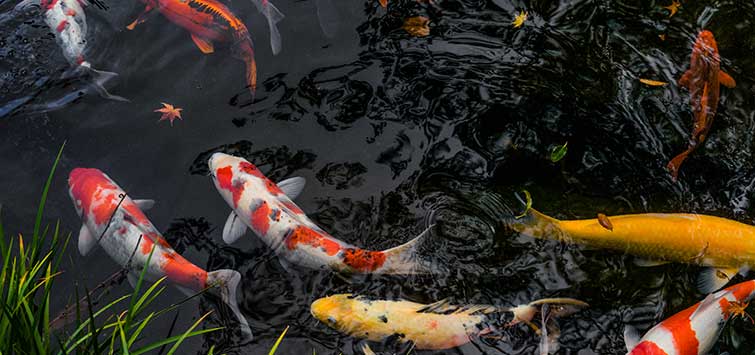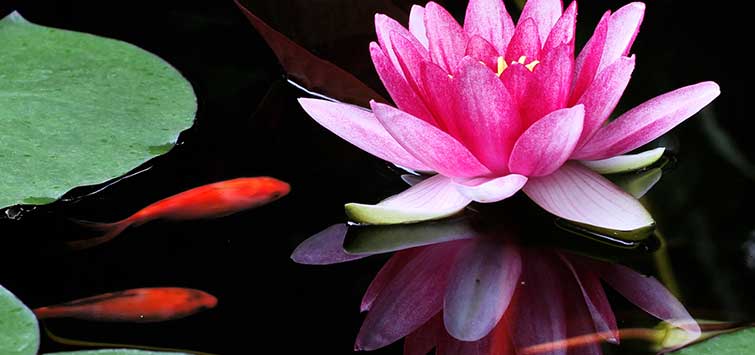Making a Pond Call With a Fish Vet
Author: Craig Adams, MS, DVM
Most veterinarians are either ill-equipped or unwilling to see fish as patients, but the author has made caring for pet fish a priority in his practice.
The Fish Care Conundrum
Though I like to call myself a fish veterinarian, my piscine patients are in reality only a small segment of my small animal practice. Fish medicine, especially at the hobbyist level, is in its infancy compared to avian medicine 20 years ago. Today avian medicine has become a board-certifiable specialty, while piscine medicine is just beginning to come into its own. Ironically, fish are more popular pets than birds.
One of the roadblocks in fish medicine has been economics. If a person spends $10,000 or more on a hyacinth macaw, they are more likely to seek out veterinary care if something ails the bird, but if a goldfish gets sick, the replacement cost is typically low, so the unfortunate fish often gets flushed.
Things are changing, though, especially as more people are spending large amounts of money on the equipment and infrastructure to keep fish. If someone spends $10,000 on a pond or a reef tank, they now want to keep the system healthy. And once people have some success with the system, they start getting attached to the fish. An inexpensive fish can then have emotional value, and its owner may seek the input of a fish veterinarian when problems occur.
Although more and more fish hobbyists require the services of a veterinarian, the market is still small enough that fish medicine cannot be a full-time profession in most cases. So I see dogs and cats four days a week and fish whenever I can. I am very busy with fish in the summer, mostly because of the koi hobby.
A Limited Specialty
Most veterinarians are ill equipped or unwilling to see fish as patients. In veterinary school, we are trained to recognize disease in all species of animals. However, fish live in water, and that is a psychological barrier for many veterinarians. It is also extremely difficult to stay abreast of the literature for all species of animals. It is uncommon these days for veterinarians to treat all species. Zoo veterinarians come close, but they likely do not stay current with the dairy or lab-animal medicine literature, for example. So we must choose the species that we want to work on, and fish are simply not on the list of most veterinarians.
Nevertheless, training in fish medicine is available to those veterinarians who are interested. There are intense courses offered through various universities, such as Aquavet in Woods Hole, Massachusetts. In addition, almost all of the national continuing-education meetings that veterinarians must attend to maintain their licenses have elective lectures and wet labs dealing with fish medicine.
Another problem facing budding fish veterinarians is one of logistics. Husbandry is vital for the health-maintenance of all species. When a client brings a dog or cat in to see me, I can get a very clear picture of what that patient’s environment is like at home by asking a few questions. This is not so with fish. Many hobbyists do not understand the nitrogen cycle, so it can be futile to try and ask them about their water quality. Additionally, some water parameters, such as dissolved oxygen and temperature, can change if they were to bring a sample of water with them to the clinic. Plus, what I think are overcrowded conditions may not be perceived that way by the client. Sick fish also do not transport well. A fish practice needs to be mobile, but very few veterinarians perform routine house calls anymore.
A Hobbyist First
My interest in fish dates back to my sixth grade classroom. We had an algae-ridden 5- or 6-gallon tank with three neon tetras in it. I was fascinated by this little piece of the Amazon. I finally received a goldfish drum bowl for my birthday, but had trouble keeping the fish alive for any length of time—I now know why. After that, I set up a couple of freshwater tanks and raised a number of fish common in the hobby: guppies, tetras, oscars, and various cyprinids. I was officially hooked.
Many years of college later, I had a master’s degree in fisheries, a DVM, and an interest in ornamental fish. I started a practice limited to fish to fill up my “spare” time. It has become busier than I ever anticipated. There is a need for fish veterinarians!
Making a Pond Call
Step 1: Assess the Pond
Someone is losing fish. They have already dumped some antibiotics in the water, added some salt, performed some water changes, and maybe even tried some other remedies available at the pet store, but all to no avail. Once I arrive at the site (a pond in this example), the first thing I do is make a quick assessment of the size of the pond, the type of filtration, the maintenance routine, and the experience level of the hobbyist. Then I get another overview of the problem. I find out the source of the water; many people in my area use well water, and this can affect the approach to the problem.
Step 2: Test the Water
The next step before catching the sick fish and performing a physical examination is to test the water. My initial test always includes pH, ammonia, nitrite, conductivity, and temperature. I look at this in much the same way as the blood pressure, temperature, and heart rate that the nurse gets every time you go to the doctor. I need a baseline from which to start. In certain circumstances, I may also test for dissolved oxygen, hydrogen sulfide, chlorine, alkalinity, hardness, etc.
In the spring I will often see a small elevation in the ammonia as the bacteria in the filter are starting to work again. It is usually not a big problem, however. Remember that the nitrogenous waste we collectively call “ammonia” exists as ammonia (NH3) and ammonium (NH4+) in various amounts, depending on the pH and the temperature (the higher the temperature and pH, the more ammonia is present). Ammonium is relatively non-toxic. So the nitrogen is present mostly as ammonium in a cold pond with a pH of 7. The same amount in a warm reef tank with a pH of 8.5 would mostly be ammonia and it would cause significant problems. Dissolved oxygen levels are also temperature dependent; cold water holds more oxygen than warm water.
Step 3: Catch the Sick Fish
Once I have established a baseline for the pond, we catch the sick fish…if we can. I once showed up at a hobbyist’s pond to examine a koi with some skin lesions. As soon as I saw his pond I knew that there would be trouble. He has a beautiful pond with well-manicured plants cascading down rockeries next to several waterfalls. The pond itself is about 50 feet across. I also learned that it is about 6 feet deep. The owner was standing at one end leaning on his net with a six-foot handle.
Now I always carry an assortment of nets to catch fish, but I prefer to use the hobbyist’s nets if possible because I have to decontaminate my equipment between calls to guard against spreading pathogens from pond to pond. But in this case I knew my seine was too small. My dipnets, while larger than his, were also too small, my waders would not keep me dry in a pond 6 feet deep, and his net was obviously not designed to catch fish in his pond. It turns out he only uses it to net out debris and the occasional dead fish. After about 30 minutes of futile attempts, I asked him to call me when he caught the fish and I would return. He had to empty out most of the water from the pond to catch the fish.
Step 4: Conduct a Physical Examination
The next step I take when doing a pond call is to conduct a physical examination, from which we can learn a lot. As part of the exam, I perform a skin scraping, a fin clip, and a gill biopsy. I look at these samples under a microscope on-site for evidence of external parasites and infection with bacteria and/or fungi. Once in a while I have to sedate the fish to get these samples, but some parasites may drop off the fish during sedation. This is also an ideal time to collect samples for bacterial culture, histopathology (tissue biopsies), or even for blood chemistry screens to be sent to the diagnostic laboratory. Sometimes I transport the fish back to the clinic for x-rays. It is only after all of this that I can make treatment recommendations, which may include general anesthesia and surgery.
A Broad Topic
Discussing treatments in fish medicine could take up many articles. Diagnosis is the first step, and we seek to accurately diagnose a disease before applying an appropriate treatment. The appropriate treatment may even be vastly different for the same condition in two cichlids, for example, if one is a severum kept as a pet and one is a tilapia bound for the dinner table.
Starting a fish veterinary practice has been a dream come true for me. It is challenging, rewarding, often amusing, and a heck of a lot of fun. And though people who have never kept fish may not believe me when I say it, my fishkeeping clients are just as attached to their pets as my dog- and cat-owning clients.

.png?h=595&iar=0&w=2781&hash=5FD5E69473BCC22199FBFA2FB71B6033)



